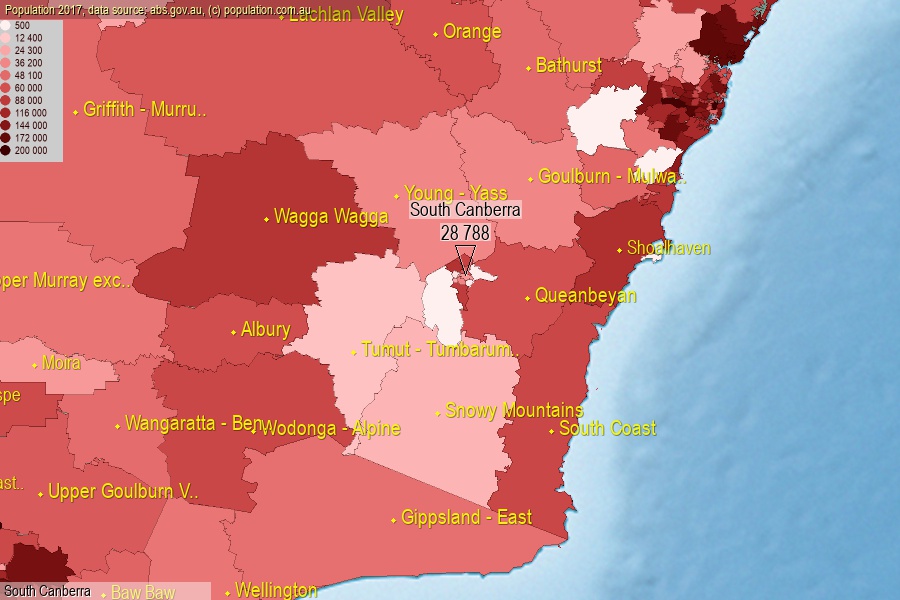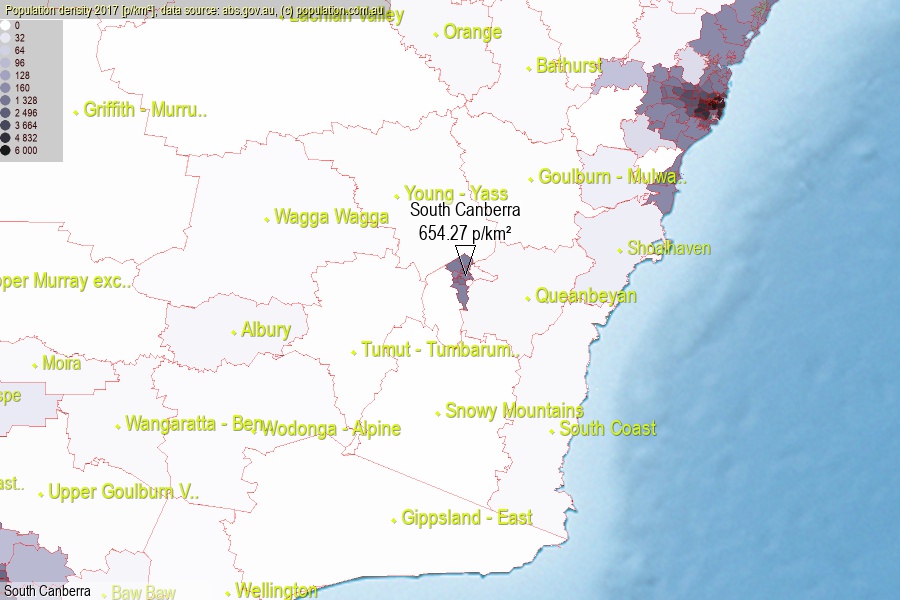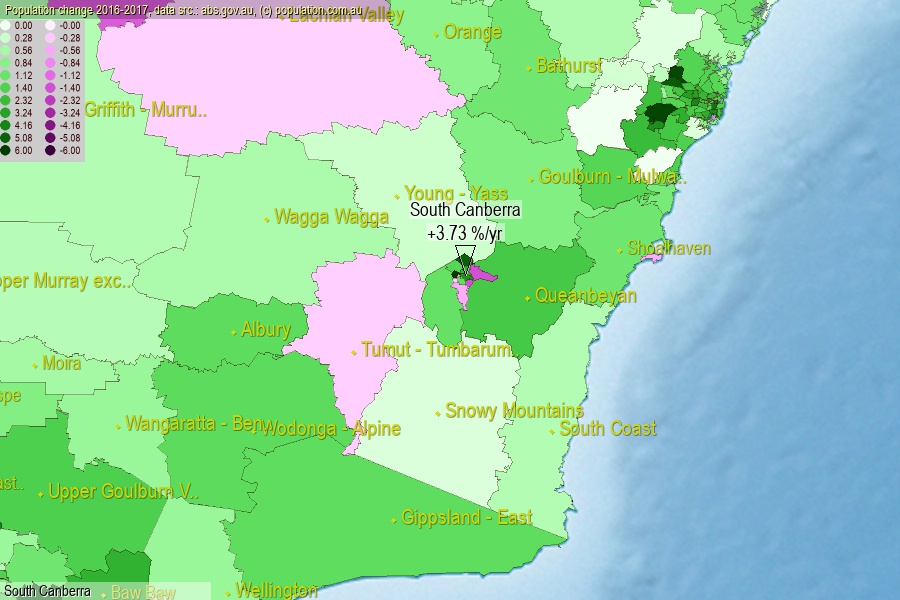 population.com.au
population.com.auLast official estimated population of South Canberra (as Statistical Area Level 3) was 28 788 people (on 2017-06-30)[2]. This was 0.12% of total Australian population and 6.867% of ACT population. Area of South Canberra is 44.00 km², in this year population density was 654.27 p/km² . If population growth rate would be same as in period 2016-2017 (+3.73%/yr), South Canberra population in 2025 would be 38 585. [0]



Click to enlarge. South Canberra is located in the center of the images.
Population [people], population density [p./km²] and population change [%/year] [2]
View borders » (new window) [4]
[1991-1992] 0.00 %/Y
[1992-1993] +0.96 %/Y
[1993-1994] +0.50 %/Y
[1994-1995] +1.03 %/Y
[1995-1996] +0.64 %/Y
[1996-1997] +1.36 %/Y
[1997-1998] +0.06 %/Y
[1998-1999] +0.81 %/Y
[1999-2000] +0.25 %/Y
[2000-2001] +0.86 %/Y
[2001-2002] +0.53 %/Y
[2002-2003] +0.11 %/Y
[2003-2004] +0.17 %/Y
[2004-2005] +2.26 %/Y
[2005-2006] +3.27 %/Y
[2006-2007] +2.05 %/Y
[2007-2008] +0.72 %/Y
[2008-2009] +1.05 %/Y
[2009-2010] +1.04 %/Y
[2010-2011] +0.99 %/Y
[2011-2012] +2.26 %/Y
[2012-2013] +1.27 %/Y
[2013-2014] +1.34 %/Y
[2014-2015] +2.05 %/Y
[2015-2016] +2.77 %/Y
[2016-2017] +3.73 %/Y
[0] Calculated with linear interpolation from officially estimated population
[1] Read more about SA3 and Australian Statistical Geography Standard (ASGS) on abs.gov.au
[2] Population data from Australian Bureau of Statistics (Population and density: 2017; change: 2016-2017)
[3] Digital Boundaries: Australian Statistical Geography Standard (ASGS) 2016.
[4] Border coordinates are simplifyed using Ramer-Douglas-Peucker algorithm.